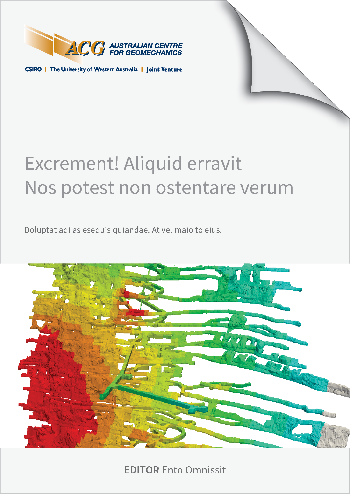Cube Caving, a new cave mine design for the future

|
Authors: Dunstan, G |
DOI https://doi.org/10.36487/ACG_repo/2435_A-01
Cite As:
Dunstan, G 2024, 'Cube Caving, a new cave mine design for the future', in Daniel Johansson & Håkan Schunnesson (eds), MassMin 2024: Proceedings of the International Conference & Exhibition on Mass Mining, Luleå University of Technology, Luleå, pp. 2-16, https://doi.org/10.36487/ACG_repo/2435_A-01
Abstract:
Current Block and Panel caving designs are based on 40-year-old technology, the LHD, and as the future caving mines are deeper and in more challenging conditions (technical, financial, and social) a new approach is required. Advances in technology are providing opportunities, including computer modelling and simulation, wireless detonators, monitoring systems for seismicity and material movement (inside and outside the cave column) and trackless autonomous electric vehicles, not previously available to the caving industry. The key design criteria identified to revolutionise the Block and Panel Cave layouts of the future are: • Maximise the pillars to withstand the increased in situ stress conditions at depth via the creation of 90o intersections, eliminating angled drawpoints, and minimising the lateral excavation associated with equipment operation. • Reduction in the total amount of development required to establish the caving footprint and the segregation of Cave Establishment activities, where possible. Leading to a reduction in the time required to undercut the footprint, resulting in a faster cave ramp up with improved metal production and cashflow. • Acknowledgement of the variable fragmentation, and associated chaotic and disruptive flow, over the life of the drawbell. Starting coarse and becoming finer due to comminution effects, ensuring the drawbell design does not result in isolated draw columns in the later stages of the cave. • Integrated drawbell and undercut design to ensure uninterrupted flow of cave material to the drawpoints, whilst maximising the effective width of the drawpoint to improve access to oversized material. • Use of the airgap during cave establishment to assist with cave propagation and fragmentation, and • Safety improvements through the drawbell and layout design which improves the operational management of water, fines, mud rush, vehicle and personnel interactions. Operationally this new approach includes the segregation of loading and hauling functions to improve not only productivity but also the ore recovery through improved draw strategies.
© Copyright 2025, Australian Centre for Geomechanics (ACG), The University of Western Australia. All rights reserved.
View copyright/legal information
Please direct any queries or error reports to repository-acg@uwa.edu.au
View copyright/legal information
Please direct any queries or error reports to repository-acg@uwa.edu.au